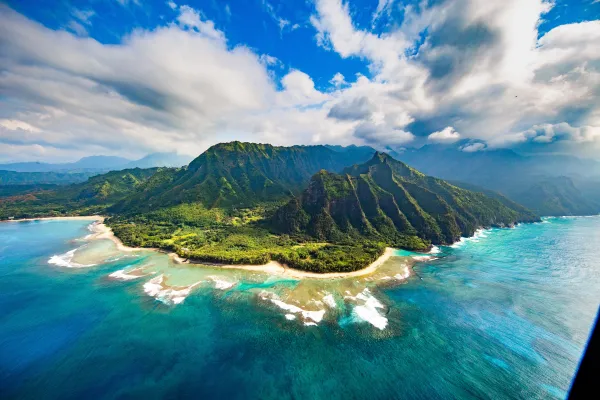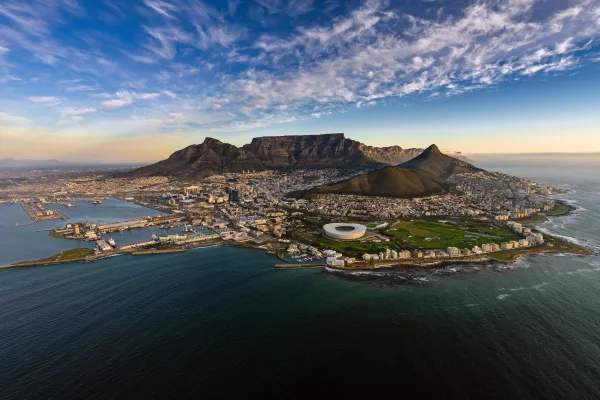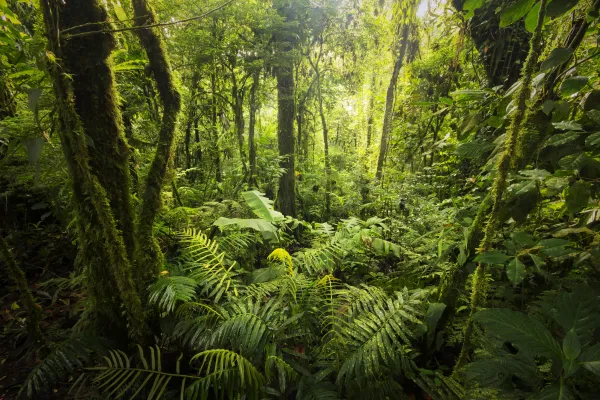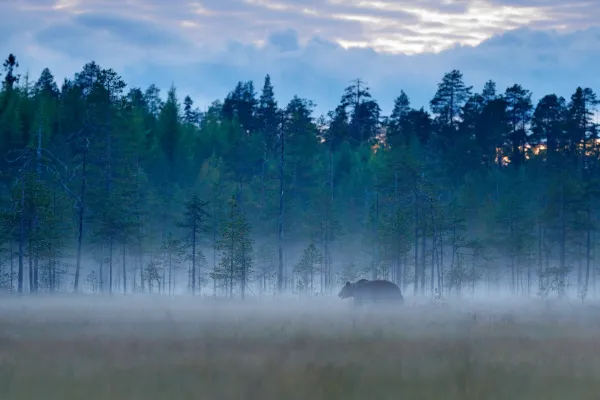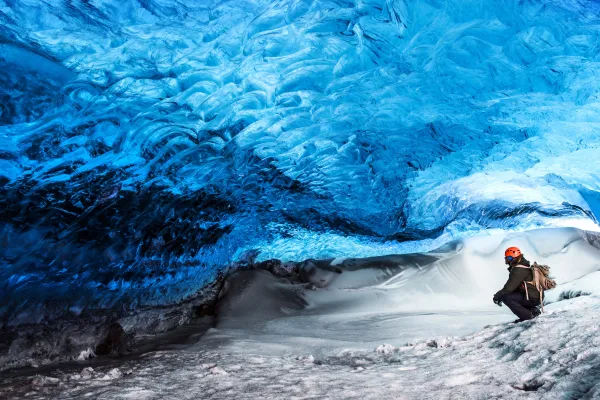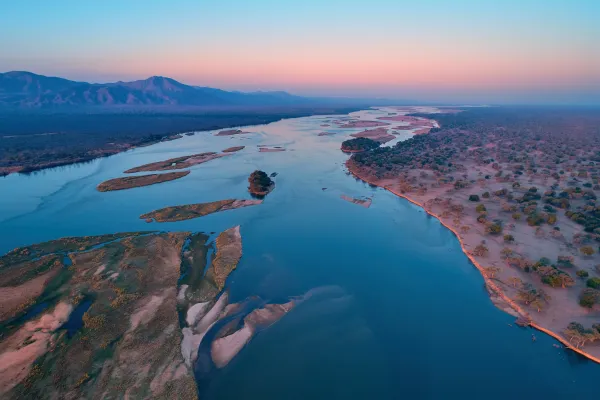White water rafting on the Zambezi
If it’s adventure of the white-water rafting variety, we have an idea of the best kind! The Zambezi River at Victoria Falls is the place as it is considered by adventure travellers and rafting professional to be the most exciting, challenging and adrenalin-filled stretch of white water in the world.
Where is Victoria Falls?
Located on the4, the international boundary between Zimbabwe and Zambia, and some 70 kilmetres downstream from Botswana, you’ll discover an enormous waterfall. You actually can’t miss it. At over a kilometre wide, the legendary Victoria Falls is the widest single falling curtain of water in the world, and it is estimated that during high flood levels over 500 million litres of water tumble over per minute!
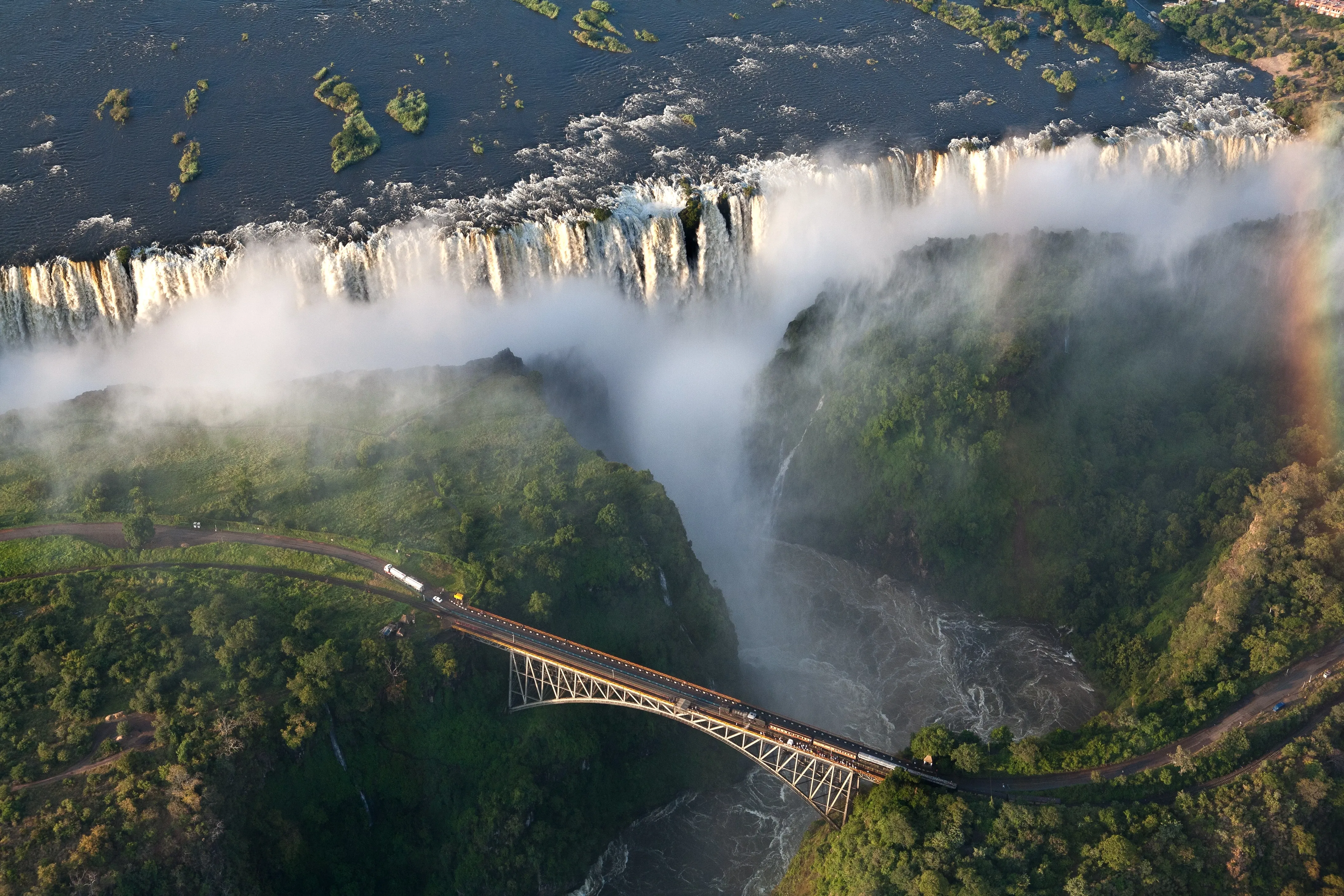
There is a series of zig-zag shaped gorges below the falls which received this enormous volume of water, with the first infamously known as the “Boiling Pot.” The relatively narrow gorges have been worn down over 300 million years and are at some points over 100m deep, and it is here that the finest half or full day rafting adventures are launched.
The Zambezi throbs with energy, and there are few adventure centres on any safari itinerary in Africa quite like it. A road and rail bridge connects Zimbabwe with Zambia, where the first commercially run white water trips were launched as far back as 1981. By the time of the tourism boom in the mid-90s, over 50,000 rafters had tackled the gnarly rapids below the falls.
There are operations on both sides of the river, either in Zambia (from Livingstone), or from Zimbabwe from the town of Victoria Falls. So, this remote enclave between two of Africa’s finest safari destinations is the world’s top white water rafting hotspot!
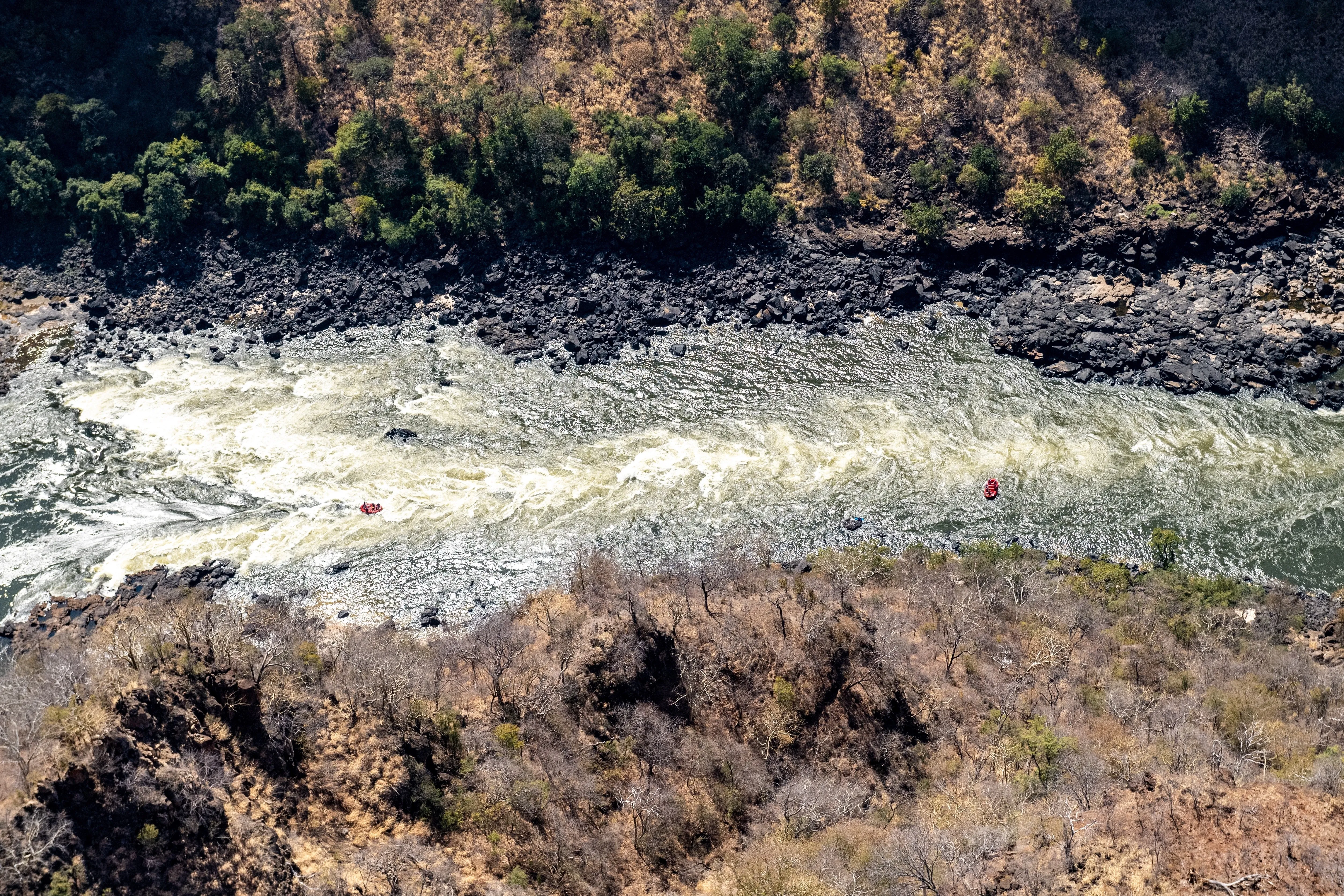
What makes the rafting here great?
The sequence and proximity of a series of world-class rafting rapids is ideal to arrange either a half-day, or a full day rafting trip. Or multi-day if you like.
Activities are done in inflatable 5- or 7-men rafts, and the professional rafters are seasoned professional as the rapids here are not any old rapids; this stretch of river contains the more challenging Grade 3 to 5 rapids than anywhere in the world. According to the British Canoe Union, Grade 5 classification is defined as “Extremely difficult, long and very violent rapids with severe hazards. Continuous, powerful, confused water makes roué-finding difficult. Precise manoeuvring is critical.”
This means that there is a very high chance of flipping the rafts! And it is as many Grade 5 rapids as in a short amount of time possible that makes the Zambezi so formidable and popular. To put this into perspective for potential rafters, the classification of a Grade 6 rapid is one that is commercially un-runnable…and the river has them too! These monsters are portered and walked around!
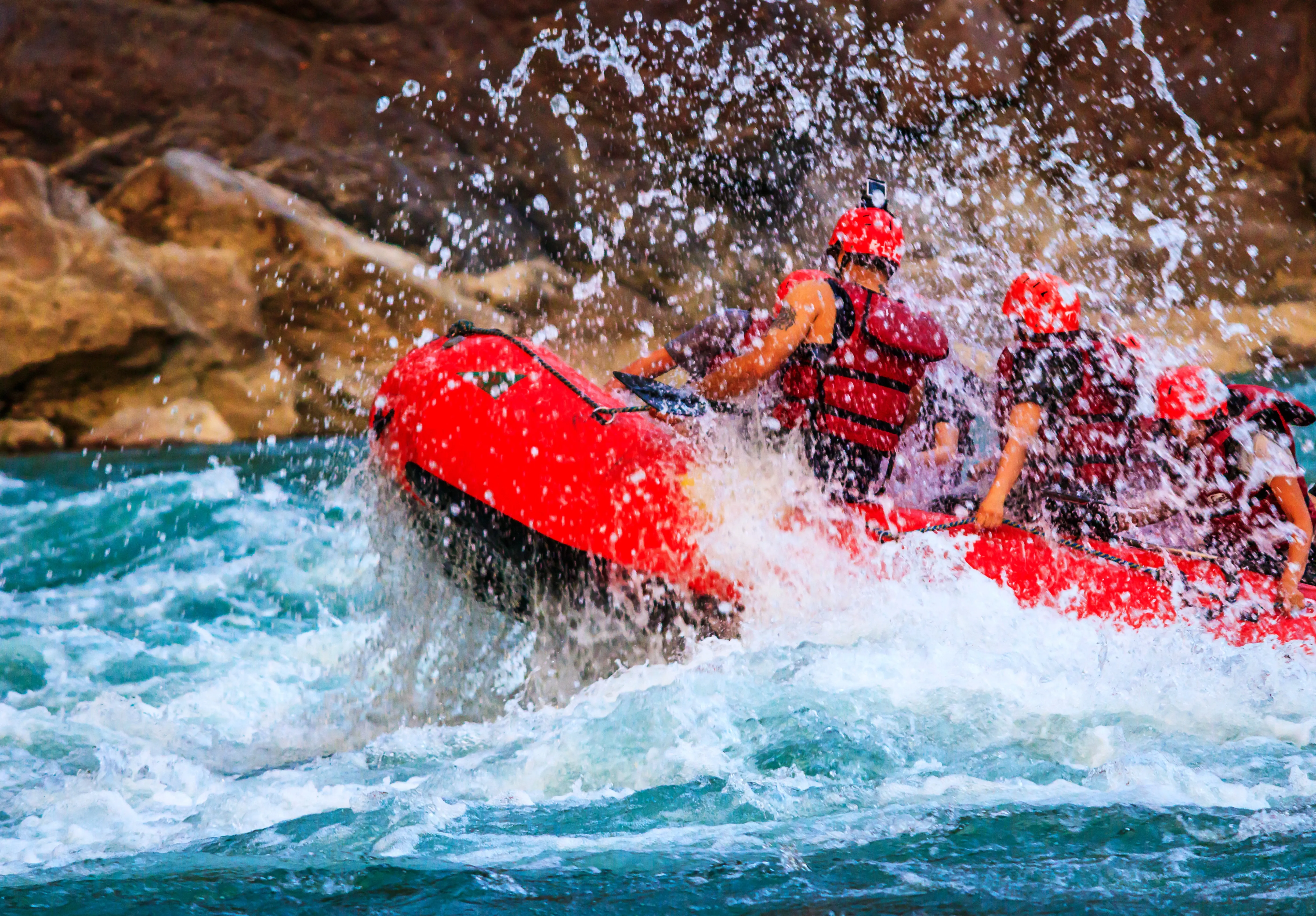
Best time for rafting
The Zambezi water levels will determine the class of the rapids so it is important to understand the time of the year.
Low water rafting conditions are normally between August and mid-January when the river is low. Conditions can be at their most challenging and exciting at this time, with wild rapids and white water. The launch point from the Zimbabwean side is just blow the spectacular boiling point in Batoka Gorge, and full day activity would normally end after negotiating rapid 1 to 21.
High water conditions when the Zambezi floods normally occur between mid-January and August, and the launch point is from rapid number 14. Due to the high-water levels, there is less white water and conditions are generally flatter.
Always remember that the floods are unpredictable or can arrive late and it is possible to close the rafting down should there be too much (or not enough) water.
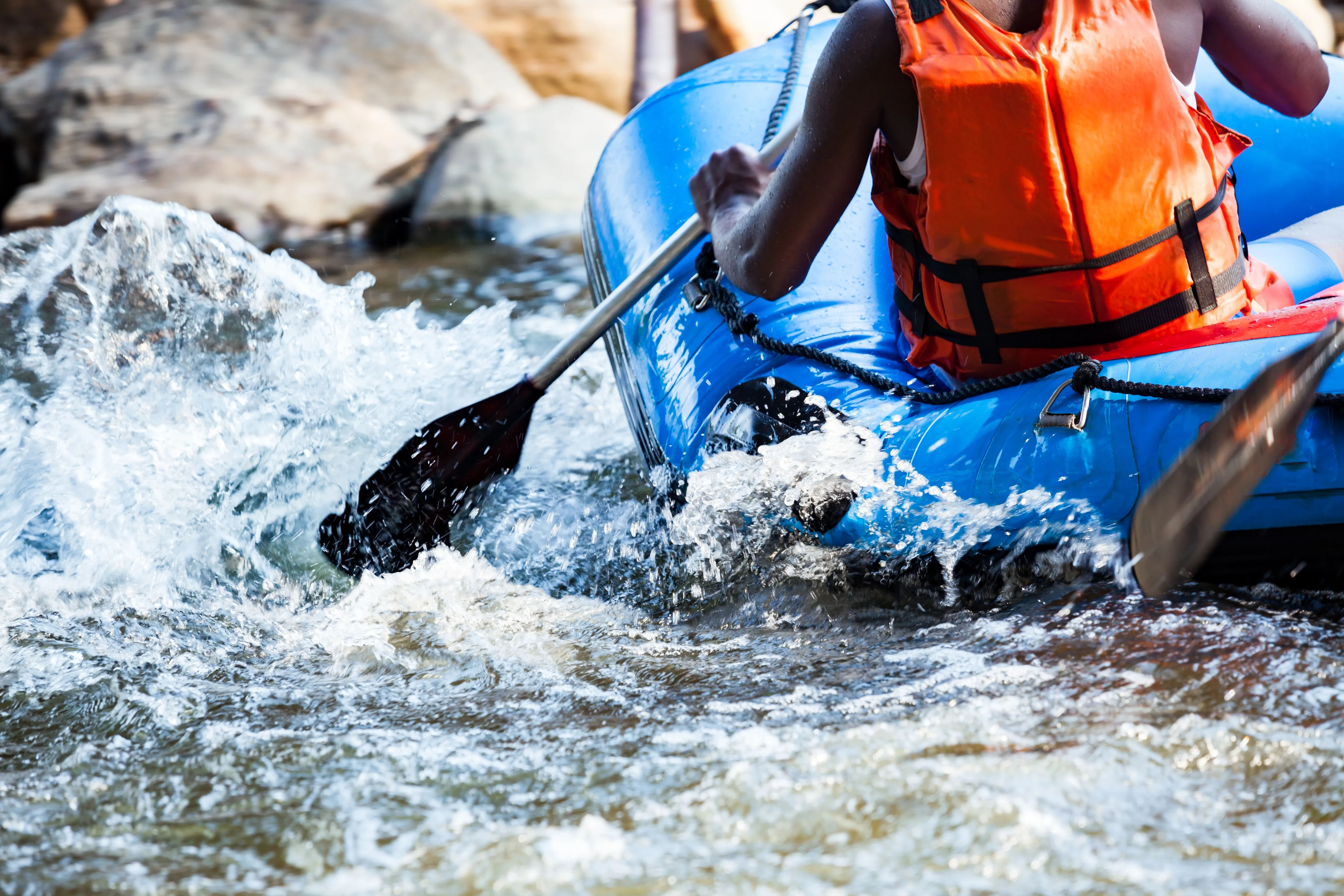
Some rafting advice
Some important information to prepare for your rafting adventures:
- The Zambezi water is considered warm water, so there are no thermoregulatory concerns once you land in the drink.
- Rescue kayakers accompany the rafters through each rapid or series of white water, with the rafts moving in convoy, and will be at your side if you fall in.
- All participants are issued with inflatable life jackets and helmets.
- There is a choice of rafts; either on a participational basis where each participant paddles and the professional rafter controls from the rear, or on a guided raft where the rafter is mounted in the centre and steers with long oars.
- Quick dry clothes and sandals are a must.
- Leave your wallets, passports, car keys at the hotel. Bring your camera or phone at your own risk in a waterproof pack that could be fastened on board the raft. There will not be any time to take photos when the action hits so the rafting companies film each raft going through all the rapids and produce stills or videos as part of their service.
- The climb in or out of the spectacular Batoka Gorge is very steep, so prepare for a well-deserved cardio workout at the end of the day. But rest assured, beer stops are included as part of the fare!

